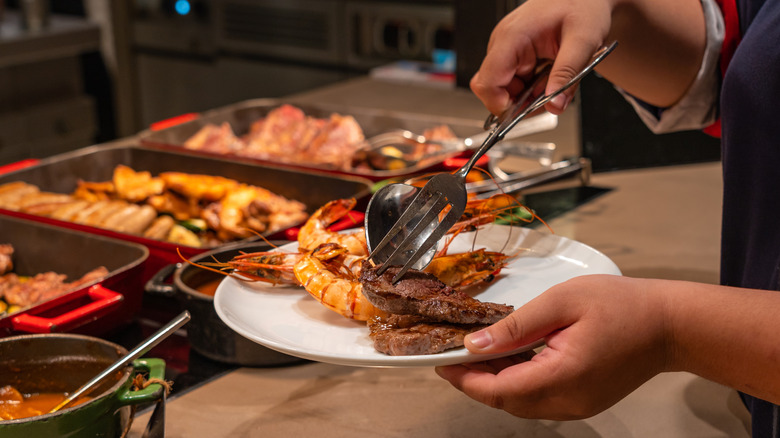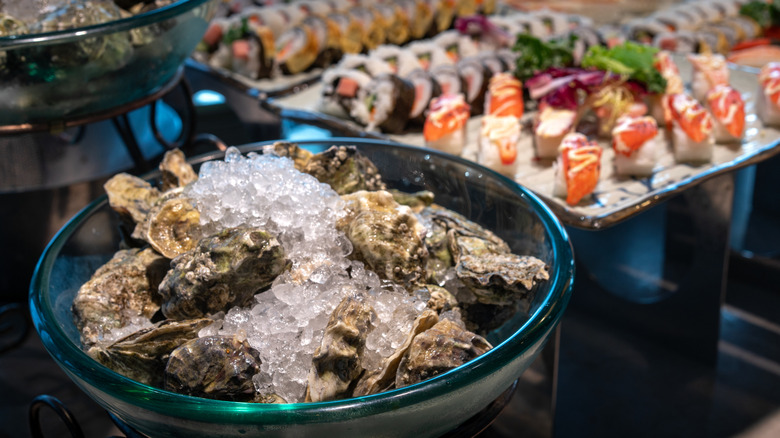Think Twice Before Eating At A Seafood Buffet Again
Buffet chain restaurants have had a tumultuous history, as these dining establishments wax and wane when it comes to popularity. While buffets may be on the rise again as consumers look to get more bang for their buck when eating out, patrons should approach certain types of buffet food with caution. Take seafood buffets, which offer diners the opportunity to eat dishes like sushi, fried shrimp, steamed fish, and octopus salad all during the course of a single meal. While such variety is tempting, especially for seafood lovers, these establishments come with some major risks.
Leaving cooked seafood unrefrigerated for two hours or longer can encourage the growth of bacteria like E. coli and Salmonella, and consuming contaminated dishes may lead to an unpleasant bout of food-borne illness. A run-in with contaminated seafood may cause symptoms like stomach cramping, diarrhea, and fever, though vulnerable people face a higher chance of complications.
Cross-contamination is another pressing concern for people with allergies to fish and seafood, as it can be challenging for establishments to completely sanitize holding trays and utensils. The effects of seafood allergies range from mild, such as itchiness and congestion, to severe, including anaphylactic reactions that constitute a medical emergency.
How seafood buffets (and diners) can mitigate potential risks
Temperature control is a must at seafood buffets, as certain temperature ranges are less likely to foster bacterial growth. In this case, hot seafood dishes must be kept in warming trays capable of reaching at least 140 degrees Fahrenheit, while cold preparations must maintain temperatures of 40 degrees Fahrenheit or cooler.
As for issues with cross-contamination, restaurants are encouraged to use dedicated utensils and dish ware for different recipes. Also, holding dishes and cookware should be cleaned and sanitized regularly throughout the day.
If your love of all-you-can-eat seafood outweighs your caution, there are some ways to enrich your dining experience. Start by looking for the common signs of a bad buffet before sitting down to eat. Red flags include sparse utensils and dish ware, as well as a lack of sneeze guards, as these factors increase chances of germ transmission. The quality of the food can also indicate whether a restaurant is worth your time or best avoided. For example, complaints about cooked fish having a strong, unpleasant odor or being dried out signal that the items on offer aren't fresh. You should also do your part to protect other diners by following proper all-you-can-eat buffet etiquette, such as never grabbing food with your bare hands.

